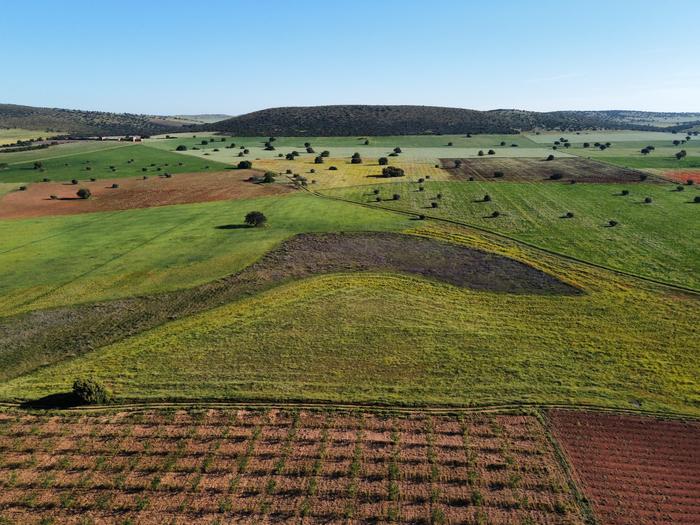In recent decades, the intensification of agriculture has been a double-edged sword. While advances in farming techniques since the 1940s have dramatically increased crop yields and livestock production, the environmental cost has been profound. Intensive farming practices have led to significant biodiversity losses, jeopardizing the very ecosystem functions that sustain agricultural productivity over time. A groundbreaking new study proposes a transformative approach that integrates rewilding into agricultural landscapes, aiming to reverse biodiversity declines without sacrificing food production.
The concept of rewilding traditionally involves restoring natural processes and species to degraded landscapes, often prioritizing wilderness preservation over agricultural use. However, this new paradigm suggests a more nuanced integration whereby at least 20% of farmland is designated for rewilding efforts, creating “core conservation areas” that promote habitat restoration, tree planting, and the reintroduction of key flora and fauna. These sizable natural patches, embedded within agricultural regions, are designed to bolster ecological resilience and improve ecosystem services crucial to sustainable farming.
Beyond the establishment of core conservation zones, the study emphasizes the strategic connectivity of these areas through green corridors. These corridors—composed of small forest fragments, scrublands, grasslands, hedge rows, and ponds—traverse the agricultural matrix, facilitating wildlife movement and genetic exchange across fragmented habitats. This spatial connectivity is vital for maintaining biological diversity and supporting ecosystem functions such as pollination, pest regulation, and soil health, which directly impact crop yields.
The remaining agricultural land outside rewilded zones is envisioned to adopt wildlife-friendly farming practices. This entails creating refuges and nesting sites for native species, installing perches for birds, and fostering diverse habitats within cultivated fields. Together, these measures could cover at least an additional 10% of farmland area, complementing the set-aside lands and contributing toward the global goal of restoring 30% of degraded lands under the Kunming-Montreal Global Biodiversity Framework.
Such ecological restoration cannot be divorced from the agricultural practices that shape landscape dynamics. The research highlights the need for reducing chemical inputs like fertilizers and pesticides in favor of more sustainable techniques, including sowing flower strips to support pollinator populations and natural pest predators. These elements form a holistic strategy where rewilding and improved agronomic practices work synergistically to enhance both biodiversity and agricultural productivity.
Livestock management is also set to evolve under this model. The introduction of more extensive, free-range grazing systems can simulate natural disturbance regimes, encouraging seed dispersal and soil turnover that maintain plant diversity and soil fertility. While large megafauna may not be suitable for many European landscapes, the reintroduction of smaller herbivores and carnivores—such as lynx, wildcats, and hares—can rebuild ecological complexity and foster resilient ecosystems that support agricultural resilience.
The benefits of integrating rewilding into farmland are multifaceted. By enhancing ecosystem services such as pollination, soil protection, and natural pest control, crop yields on the remaining farmed land could increase, compensating partially for production lost on designated nature areas. Farmers could see advantages not only through increased quality and resilience of crops but also via cost savings resulting from reduced dependency on synthetic inputs.
Financial incentives could play a pivotal role in encouraging adoption of these practices. The study suggests that while mandatory set-asides for nature could be effective, more widespread success will likely come through payments for ecosystem services and tax incentives. Such economic frameworks would reward farmers for delivering biodiversity benefits, creating sustainable incentives aligned with conservation and food production goals.
An important consideration is the differential impact of rewilding across farm size and intensity gradients. Smaller farms may lack sufficient land individually to implement rewilding measures at meaningful scales. Collective action and cooperative management among clusters of smaller farms could enhance implementation, ensuring that ecological and agricultural benefits accrue across broader landscapes.
The greatest potential gains from rewilding appear concentrated in the most intensively farmed and ecologically degraded regions, many of which are in developed countries. Here, biodiversity loss is most severe and ecosystem functions are under greatest threat. Conversely, more extensive and less intensive farming systems found in some developing regions, including landscapes managed by Indigenous peoples, already retain substantial natural habitats and may experience fewer marginal benefits from rewilding efforts.
This research heralds a paradigm shift in landscape management, moving away from the dichotomy of food production versus nature conservation toward a vision of integrated agroecological systems. It underscores that sustainable agriculture and biodiversity recovery are not inherently conflicting objectives but can be mutually reinforcing through strategic land use, ecological restoration, and adaptive farming.
Realizing this vision will require a fusion of ecological science, agricultural innovation, policy reform, and social collaboration. Researchers emphasize that there is no one-size-fits-all solution; tailored approaches sensitive to local contexts will be essential. Yet, ambivalent or resistant attitudes among landowners and farmers must be addressed through education, participatory governance, and equitable economic incentives.
In an era where global challenges such as climate change and food insecurity converge, aligning farming practices with ecosystem health represents a critical pathway forward. Integrating rewilding into agriculture could safeguard biodiversity, enhance ecosystem services, and secure long-term food production, thereby sustaining both people and planet.
As we envisage a future where natural and agricultural landscapes coexist in dynamic balance, this study offers a compelling roadmap. It challenges policymakers, farmers, and conservationists to rethink farmland as a shared habitat for humans and wildlife alike, catalyzing systemic change needed to reverse nature’s decline within productive landscapes.
Subject of Research: Integrating Rewilding into Agricultural Landscapes for Biodiversity Recovery and Sustainable Food Production
Article Title: A multi-scale approach to integrating rewilding into agricultural landscapes
News Publication Date: 16-Jun-2025
Web References: https://doi.org/10.1002/fee.2860
References: José M Rey Benayas, James M Bullock, Henrique M Pereira. 2025. A multi-scale approach to integrating rewilding into agricultural landscapes. Frontiers in Ecology and the Environment. DOI: 10.1002/fee.2860
Image Credits: Jose Maria Rey Benayas
Keywords: Sustainable agriculture, Farming, Pollinators, Ecosystem services, Crops, Ecology, Agroecosystems, Food production, Trees




